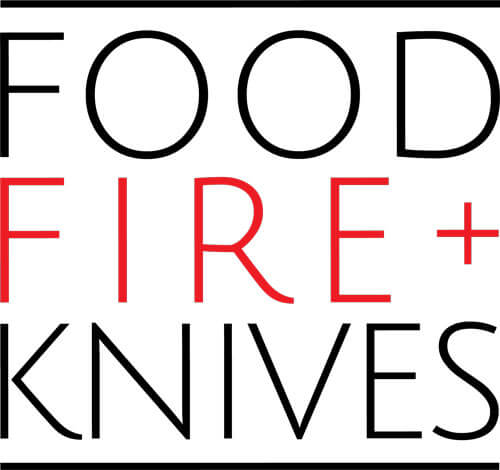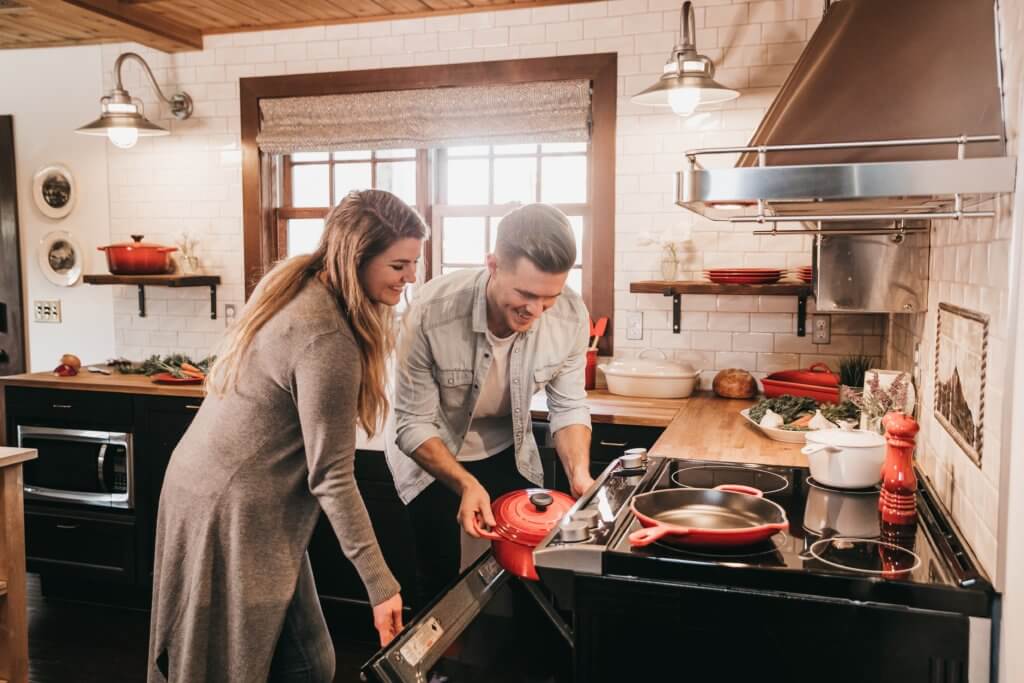Fresh, farm to table produce, local ingredients… Zzzzzz… OK, we get it. I think it’s obvious as any home chef, you should always have these. Was there ever any question? This is an essential list that you might even already have, but not sure why. We talk about these items often in our classes. Let me expand.
1. A Quality (French style) Home Chef’s Knife…
This is number one on this list because we believe it to be the most important for any home Chef. Think of it as an investment. You won’t need to spend $500 on a fancy Shun knife, but I would shoot for the $100-$150 price range from your local kitchen store. The difference between “French Style” and an “Asian style” is of a few things, but mostly due to the ability to rock the knife back and forth with a curved blade. So think of slicing and rocking back and forth vs. chopping in an up and down motion. Great starter and affordable knife brands include Henckels or Wusthoff.
So what defines quality? Besides not having to sharpen it every time it hits the cutting board, let’s just go over the most important parts of the knife.
Blade or Edge– Of course you’ll want a sharp knife. But a knife that you shouldn’t have to sharpen everyday is what separates the quality of steel and manufacturing. I could write a separate article on the intricacies of Japanese, German, French or American steel. An all-purpose, home chef’s knife blade should be somewhat thicker and have very little bend or give. As you reach a more professional level, you can buy a knife that has a bit more bend and thinner blade that’s perfect for fine knife work (small dices, mincing, brunoise etc.)
Bolster- I love this part of my Viking knife. Not many people realize how useful this is. Traditional to a French Knife. Most people think it’s just a guide on where to place their thumb and index fingers. But this little gem is amazing for cracking bone like a chisel or hammer. Think about breaking lobster claws or chicken bones. If your knife isn’t equipped with this feature you’ll run the risk of chipping the blade.
Tang- This refers to the part of the steel that flows through the handle. You’ll want a “full tang” for a sturdy knife that won’t one day fall apart during a crucial step in your recipe or worse yet, into your hands while using it. Any quality knife will be full. They make half that are inserted into the handle (usually hidden) and believe it or not, no tang, that’s simply glued to the handle.
2. Kosher Salt
Salts. A booming industry. These days it’s common to find many different varieties from Pink Himalayan to Iodized. Skip the gimmicks. For the most part, unless you’re finishing your dish with a pink salt, no one will be able to tell the difference. However, we do want to stay away from Iodized.
So why Kosher? Well for one it doesn’t contain iodine which imparts a certain chemical flavor to food. Since 1924 the government created the initiative of adding iodine to salt for the prevention of goiters. Trust me, you won’t be affected by not using iodized salt. Kosher is visible, easy to pick up and spread evenly over food. You won’t lose half of it while seasoning going from the salt in your hand to the food. And lastly, it’s affordable unlike some of those “designer salts”. Kosher will help you season properly by not adding too much or too little. Mortons is my favorite due to the larger crystals. This is one of the biggest differences between an amateur home chef and a professional home chef.
3. Essential to any home kitchen: oils + vinegars (or acids)
No, not those therapeutic essential oils. I’m talking a nice fat or oil such as olive, sesame or grape seed oil. Chef’s love to finish dishes with them and it gives the dish that little extra something in terms of flavor and aesthetic appeal. And the reason I mentioned “finish” vs. cook with, is due to what is called “smoke point”.
A smoke point is the area where the oil breaks down. You’ll begin to notice white smoke rise from your pan. This white smoke is perfect when searing meats. You won’t want to ruin the flavor of a nicer oil, and some even get bitter. Use a neutral oil like canola or vegetable for this purpose. Also note that some of these oils have a lower smoke point in the 3-400 degree range where canola is nearly 500. This will give you a false sense of when your oil is hot enough for a proper sear. Instead your meat will appear boiled and be missing that beautiful brown, crusty Maiiard effect or caramelization.
And the Yin to fats Yang is acid. In many forms. Citrus, wine and vinegars are most common. These are crucial for the completion of most sound dishes. Fat coats your tongue while not allowing you to properly taste each ingredient entirely. The acid breaks through this while creating vibrancy through each ingredient. This is why you’ll notice most dishes with a high fat item like pork or duck most notably, are always paired with a cherry, orange, wine or “gastrique” (an acid and sugar reduction).
4. A Proper Cutting Board for any Home Chef
Just like peanut butter needs jelly, your knives need a good cutting surface. And depending on the length of your knives, invest in a large multipurpose polypropylene board. Don’t get me wrong, I love my wooden butchers block. It looks nice, is great for vegetables and quickly cutting up that snack at 3 a.m. But the multipurpose boards are generally BPA free, easy to clean, non-porous and won’t easily discolor when slicing your pickled beets. When cutting meats or seafood on a porous board such as wood, your running the risk of contamination as it’s very difficult to sanitize the interior of the board. Food poisoning is no fun for anyone.
5. A Chefs Favorite Pair of Tongs
This may seem simple and obvious. But after all that chopping and prepping, these are a home chefs best friend and lifeline. An extension of your hand. They should be sturdy and not cheap, thin or “tinny”. If you’re grilling I recommend longer tongs but the shorter tongs for everything else. They’re much easier to control. On a busy Saturday night, if a cook misplaces his tongs (not unusual), it will send them into panic mode. Because at the point they realize they need them, the food is done or is in need of some TLC.
When cooking, I never set mine down. If I need to use my hand I just simply tuck them around my pinky finger to give access to my palm and the other 4 digits. Some cooks will even put them in their back pocket (I highly discourage this unsanitary behavior). Also, please DO NOT use tongs for fish. EVER. Unless you’d like it to resemble canned tuna fish. Use something gentler like a fish spatula or spoon.

